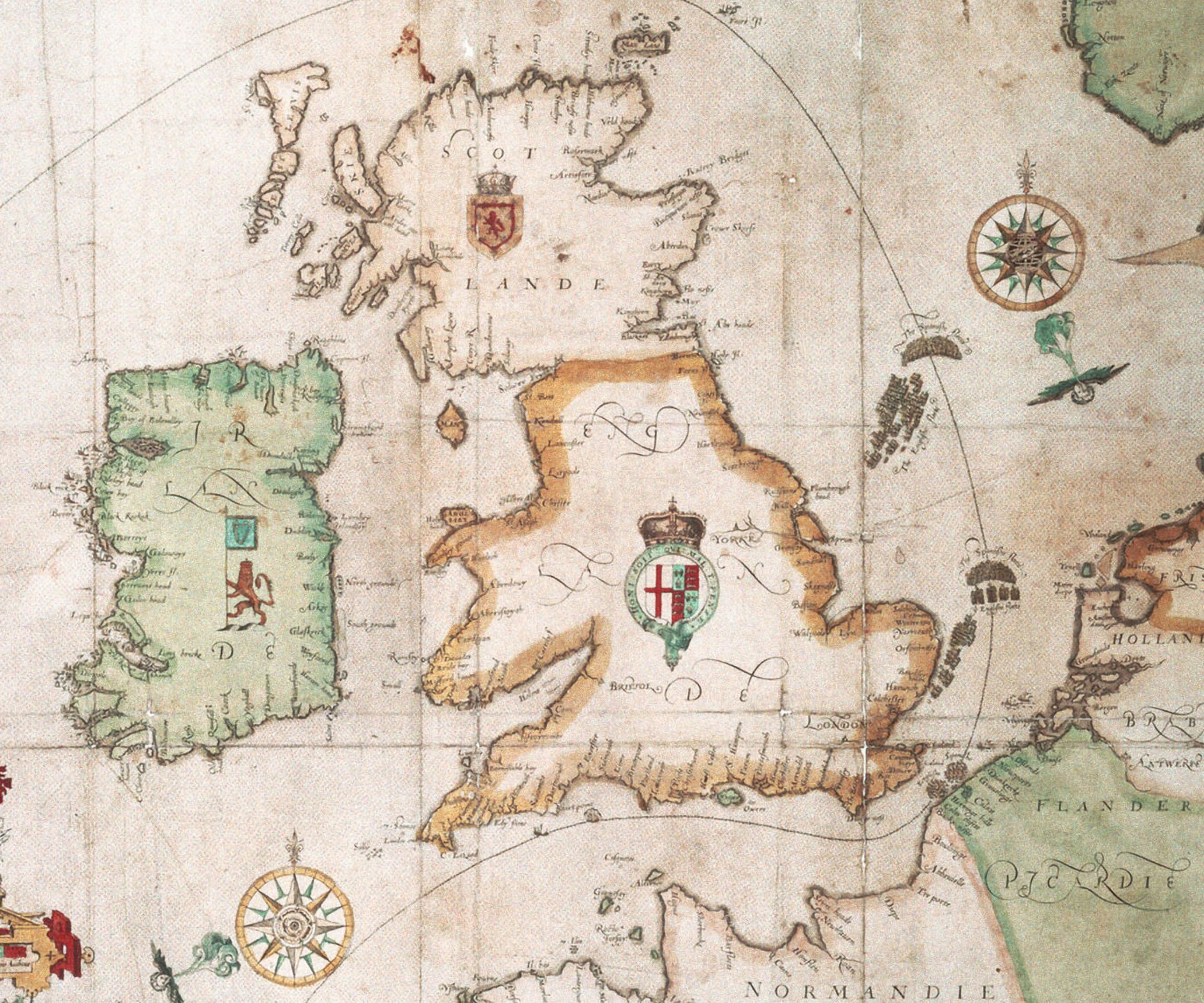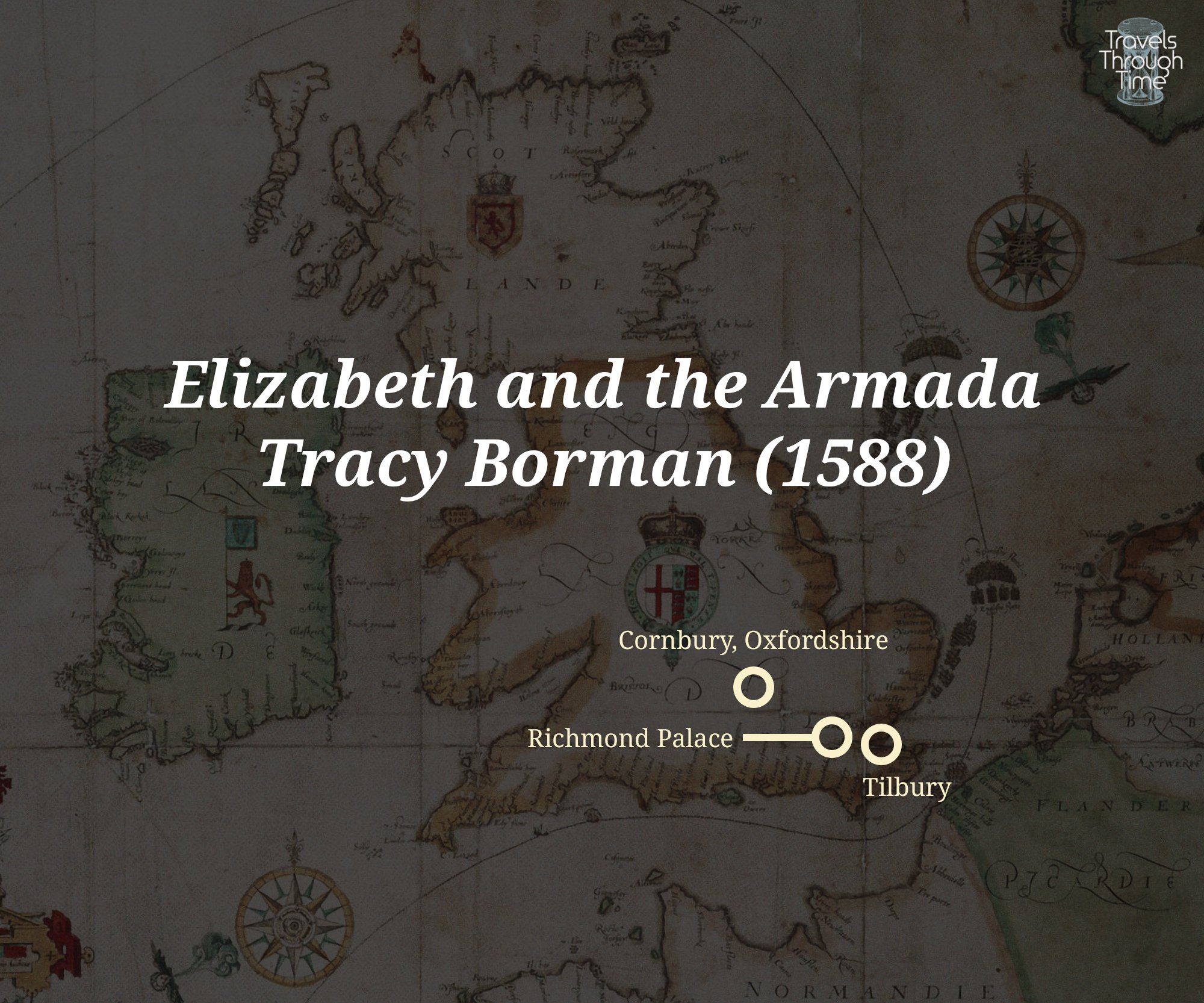Elizabeth I and the Spanish Armada: Tracy Borman (1588)
Tracy Borman, author of Crown and Sceptre
Historians often refer to the reign of Queen Elizabeth I as being England’s Golden Age. And of all the forty-five years in which she was the monarch, the year 1588 stands out as the most dramatic. It was a year of peril, a year of valour and a year of heartbreak.
In this episode bestselling historian and novelist Tracy Borman takes us back to the tense summer of 1588. While various events compete for attention – the fate of the Armada, the health of Leicester – Elizabeth remains at the heart of it all. As Tracy Borman argues (and Violet Moller agrees), she was a queen to outrank all the others.
*** [About our format] ***
In 1558, John Knox published his book The Monstrous Regiment of Women a misogynist polemic in which he ranted that ‘To promote a woman to bear rule…is repugnant to nature,’. In the very same year, Elizabeth I ascended to the throne of England, at the age of 25.
This was the kind of bigotry the young queen was up against as only the second female ruler of England (after her sister Mary who she succeeded). There was a lot at stake, and she spent the early years of her reign carefully establishing her authority and delicately balancing the complex political and religious issues that had caused so much turbulence in previous decades.
Fortunately, Elizabeth was uniquely qualified to tread this tightrope, not only was she brilliantly intelligent and well educated, her extraordinary and often bleak childhood had taught her exactly how to navigate the choppy waters and murky currents of the Tudor court.
Of all the stormy moments in Elizabeth’s reign, the events of 1588 were the most dramatic. As any primary school kid can tell you, Elizabeth’s former brother-in-law and sometime suitor, Philip II of Spain, sent an Armada of 130 ships to attack England.
Francis Drake, who may or may not have been playing bowls overlooking Plymouth harbour, organised a system of warning beacons that were lit when the Spanish fleet was spotted off the toe of Cornwall. He tracked their progress along the south coast, sending in fire ships and attacking at opportune moments.
While Elizabeth made the speech of her life in front of her troops at Tilbury, the mighty Armada was already scattered and heading for the Shetland Islands. This was a defining moment – England began its transformation from a foggy backwater into a major power and Elizabeth took her rightful place on the world stage.
We have a wonderful guide on our tour of these dramatic events, the multi-talented best-selling author, historian and broadcaster Tracy Borman whose latest book, the one we will be talking about today, is Crown & Sceptre: A New History of the British Monarchy, William the Conqueror to Elizabeth II.
***
Click here to order Tracy Borman’s book from John Sandoe’s who, we are delighted to say, are supplying books for the podcast.
*** Listen to the podcast ***
Show notes
Scene One: 9 August, 1588. Tilbury. As Philip II’s Armada is blown up the English Channel by a decidedly Protestant wind, Elizabeth rallies her troops at Tilbury, dressed in a breastplate and plumed helmet.
Scene Two: August/September, 1588. The painting of the Armada portrait. Elizabeth celebrates victory over Philip of Spain by ordering a pearl-spangled dress to wear for a glittering new portrait, filled with symbolism and hidden meaning.
Scene Three: 4 September, 1588, Oxfordshire. Elizabeth’s closest friend and love of her life Robert Dudley, Earl of Leicester, dies in Oxfordshire leaving her heartbroken.
Memento: The plumed helmet that Elizabeth wore when she delivered her Tilbury Speech.
People/Social
Presenter: Violet Moller
Guest: Tracy Borman
Production: Maria Nolan
Podcast partner: Unseen Histories
Follow us on Twitter: @tttpodcast_
Or on Facebook
See where 1588 fits on our Timeline
About Tracy Borman
Tracy Borman is a bestselling historian and novelist. Her books include Elizabeth’s Women, which was Book of the Week on Radio 4 and Thomas Cromwell: the untold story of Henry VIII’s most faithful servant. Her highly acclaimed debut fiction trilogy, inspired by the events surrounding the Gunpowder Plot, comprises The King’s Witch, The Devil’s Slave and The Fallen Angel.
Borman has presented a number of history programmes for Channel 5, including The Fall of Anne Boleyn and Inside the Tower of London. She is a regular contributor to BBC History Magazine and gives talks on her books across the country and abroad. Tracy is also joint Chief Curator of Historic Royal Palaces and Chief Executive of the Heritage Education Trust.
Map of the Scenes
Background map credit: Wiki Commons
Strip Map showing the progress of the Armada in August 1588, the sixth panel shows the attack of the fireships
The Confrontation
Map credit: Library of Congress
Listen on YouTube
Elsewhere in the sixteenth-century
The Death of Christopher Marlowe: Stephen Greenblatt (1593)
In this special episode to launch Season Five we are travelling back to Elizabethan England to witness one of the most mysterious events in literary history – the death of the playwright Christopher Marlowe in 1593.
The City of Tears: Kate Mosse (1572)
In this episode bestselling author Kate Mosse takes us to the heart of one of the most dramatic and violent episodes in French history – the St. Bartholomew’s Day massacre.
Thomas Cromwell and Anne Boleyn: Diarmaid MacCulloch (1536)
In this wonderfully described episode, Diarmaid MacCulloch, takes us back to the dramatic heart of Henry VIII’s Tudor court. The character in focus is one of the most fascinating of all: Thomas Cromwell.
Albert and the Whale: Philip Hoare (1520)
In 1520 the artist Albrecht Dürer was on the run from the Plague and on the look-out for distraction when he heard that a huge whale had been beached on the coast of Zeeland. So he set off to see the astonishing creature for himself.















